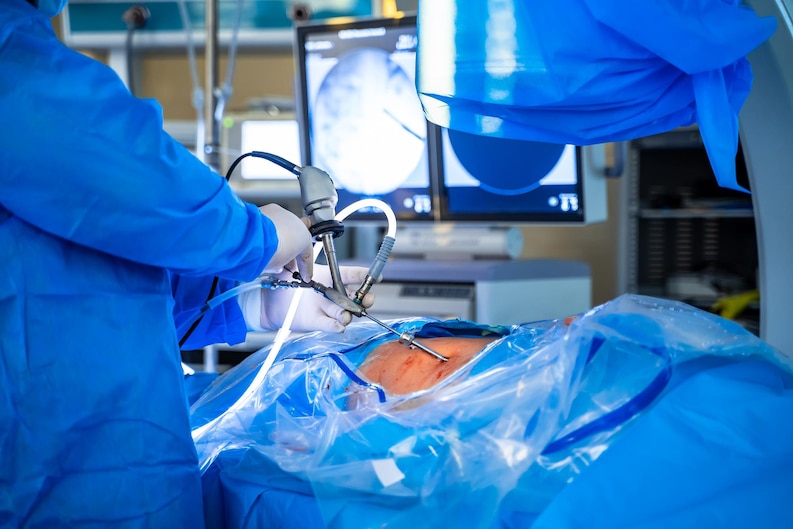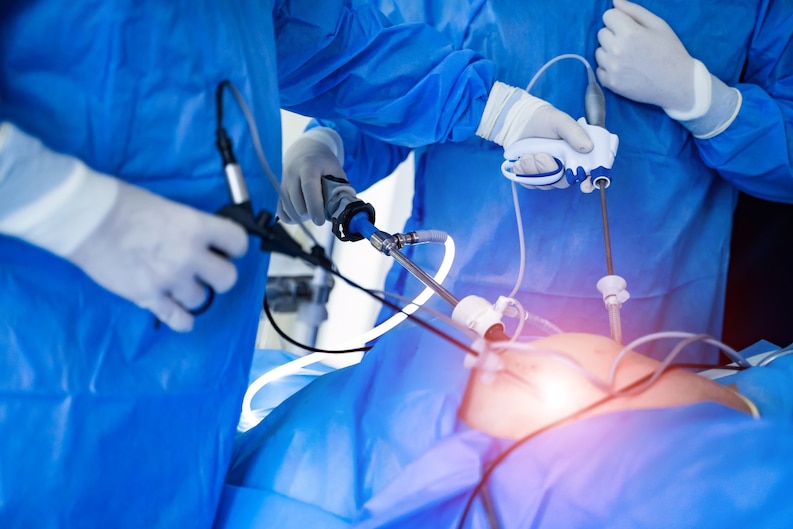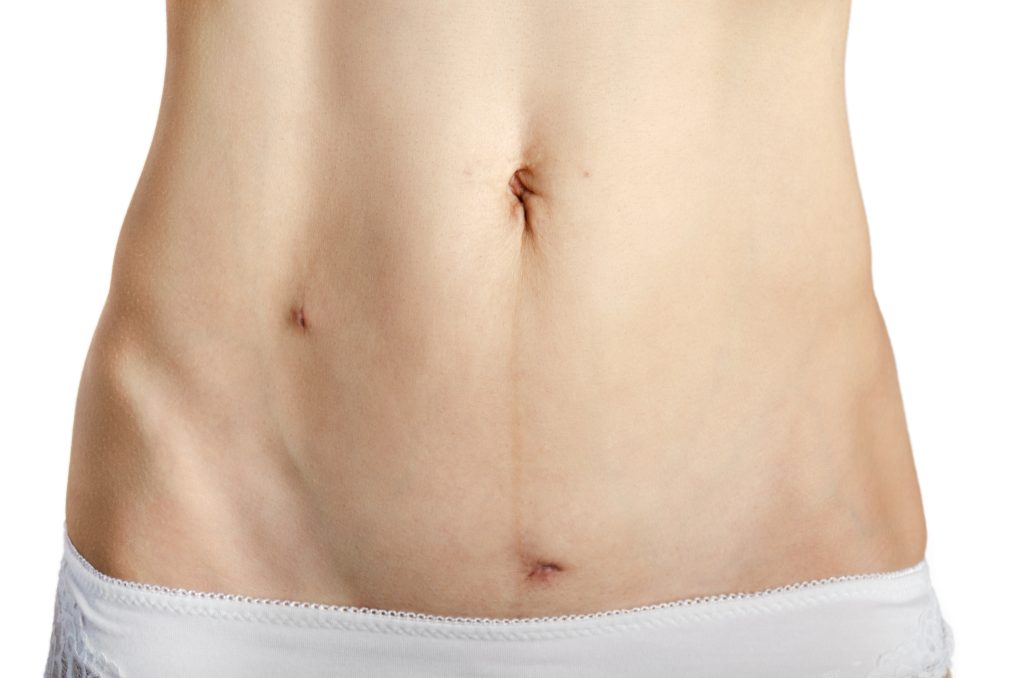What is a laparoscopic cholecystectomy?
A laparoscopic cholecystectomy refers to a surgical procedure performed to eliminate the gallbladder from your body.

In order to remove your gallbladder, the surgeon will create several tiny cuts on the right side of your abdomen. One of these incisions will be used to insert a laparoscope, which is a slender tube equipped with a camera. This camera will project images of your gallbladder onto a screen. The actual removal of the gallbladder will take place through another small incision.
A laparoscopic cholecystectomy is a less invasive procedure compared to an open cholecystectomy, which requires a bigger incision for gallbladder removal.
What are the benefits of surgery?
In order for you to have a healthy recovery, it is important that you experience no pain and are able to consume a regular diet. The surgery performed should also effectively minimize any potential severe issues that can arise from gallstones.
Symptoms
A number of individuals possess gallstones that are asymptomatic and do not necessitate surgical intervention. Nevertheless, when these stones try to exit the gallbladder and obstruct the outlet, it can lead to intense pain in the upper abdomen. This condition is referred to as colic.
Common symptoms may include:
- pain in the upper abdomen that occurs following the consumption of fatty meals
- nausea and vomiting
- discomfort felt between the shoulder blades and under the right shoulder
- chills and fever
Typically, symptoms persist for brief durations and commonly happen after consuming fatty meals, which prompt the gallbladder to shrink.

Who needs to have gallbladder removal?
Individuals experiencing pain and infection due to gallstones can find relief through the use of laparoscopic cholecystectomy.
Gallstones are solid formations that develop in the gallbladder. They have the ability to obstruct the release of bile from the gallbladder into the digestive system. This obstruction leads to inflammation of the gallbladder, a condition known as cholecystitis. Additionally, gallstones have the potential to travel to different areas of the body and result in various complications.
Symptoms of gallstones include:
- Feeling bloated.
- Fever.
- Jaundice (yellow-looking skin).
- Nausea.
- Discomfort experienced on the right side of the abdomen, potentially extending to the back or shoulder.
What steps can I take to get ready for the surgery?
If you quit smoking, you can decrease the chances of facing complications and enhance your overall health in the long run.
Make an effort to keep your weight in a healthy range. Being overweight increases your chances of facing complications. Your surgeon might recommend following a specific diet in the two weeks prior to the procedure in order to shrink your liver. The liver is a large organ that needs to be lifted during surgery for safety reasons. If it is smaller, the risk of complications, like bleeding, is lower.
Before engaging in regular physical activity, it is important to seek advice from your healthcare team or general practitioner, as exercise can play a significant role in preparing for surgery, facilitating a speedy recovery, and enhancing overall well-being in the long-term.
Have a conversation with the medical staff regarding any necessary vaccinations that can help lower the chances of contracting a severe illness during your recovery. When you arrive at the hospital, remember to consistently wash your hands and wear a mask as instructed.
The process of gallbladder removal surgery

There are two primary methods for extracting a gallbladder.
- A laparoscopic cholecystectomy, also known as a keyhole surgery, involves making small incisions in your abdomen. Through these incisions, fine surgical instruments are utilized to reach and extract your gallbladder.
- An open cholecystectomy involves creating a single, larger cut in the abdomen to reach and extract the gallbladder.
Keyhole surgery is the preferred option as it allows for earlier discharge from the hospital, quicker recovery, and results in smaller scars compared to an open procedure.
Both procedures are done with the use of general anesthesia, ensuring that you will be unconscious during the surgery and won’t experience any discomfort throughout the process.
What is the course of action following laparoscopic cholecystectomy?
After the surgery, your medical team will monitor you for a few hours to ensure a smooth recovery without any complications. They will observe your heart rate, breathing, blood pressure, and urinary functions to ensure a successful wake-up process from the anesthesia.
How soon will I recover?

You should be able to return home on the same day, but your doctor could suggest extending your hospital stay if necessary.
The duration of your return to work can vary between 2 to 4 weeks, depending on the extent of your required surgery and the nature of your job.
Before beginning any physical activity, it is recommended to consult with your healthcare team or general practitioner in order to ensure a safe return to regular activities as quickly as possible.
You are expected to fully recover and resume your regular activities and diet.
WHEN TO CONTACT YOUR DOCTOR FOLLOWING LAPAROSCOPIC GALLBLADDER REMOVAL
If you experience any of the issues listed below, make sure to contact your surgeon or family physician.
- Fever over 101 degrees F (38.5 C)
- Severe pain or swelling in the belly
- Yellow skin (jaundice)
- If you are experiencing a sensation of illness in your stomach or are physically expelling food or liquids (nausea or vomiting), it is advisable to contact your physician if you are unable to consume any nourishment.
- There is a concern if there is blood or pus coming out of any of the small incisions in the surgical area, or if redness is increasing or spreading.
- Pain that your medicines do not help
- Difficulty breathing or persistent cough.
If you have any additional inquiries regarding your healing process, please contact your doctor’s office.
Treatment in Türkiye:
The medical staff of surgical teams, doctors, and consultants at REHABTÜRK can provide the best treatment options and free consultations, striving to stay up-to-date on the latest medical technologies and methods.
